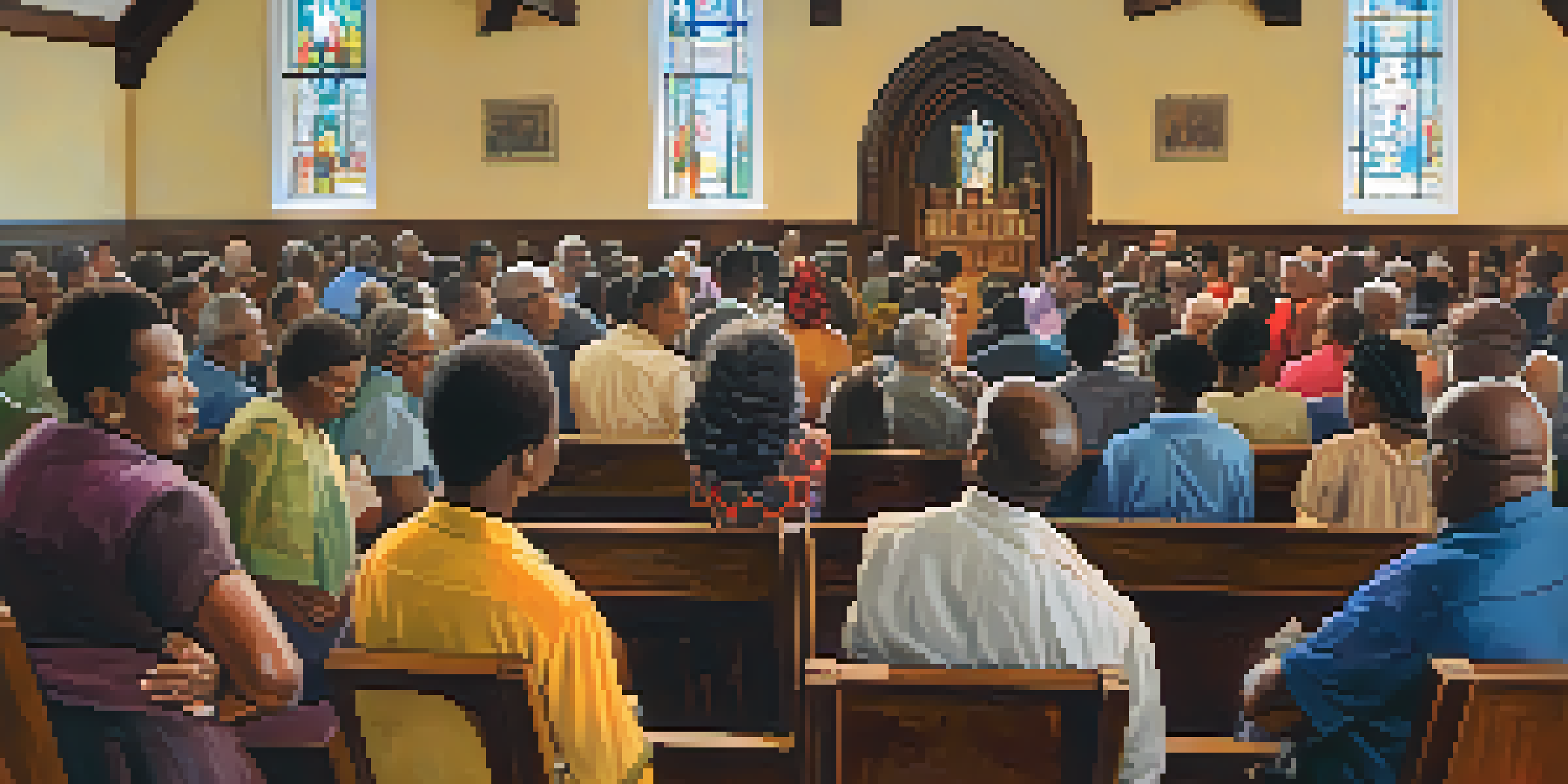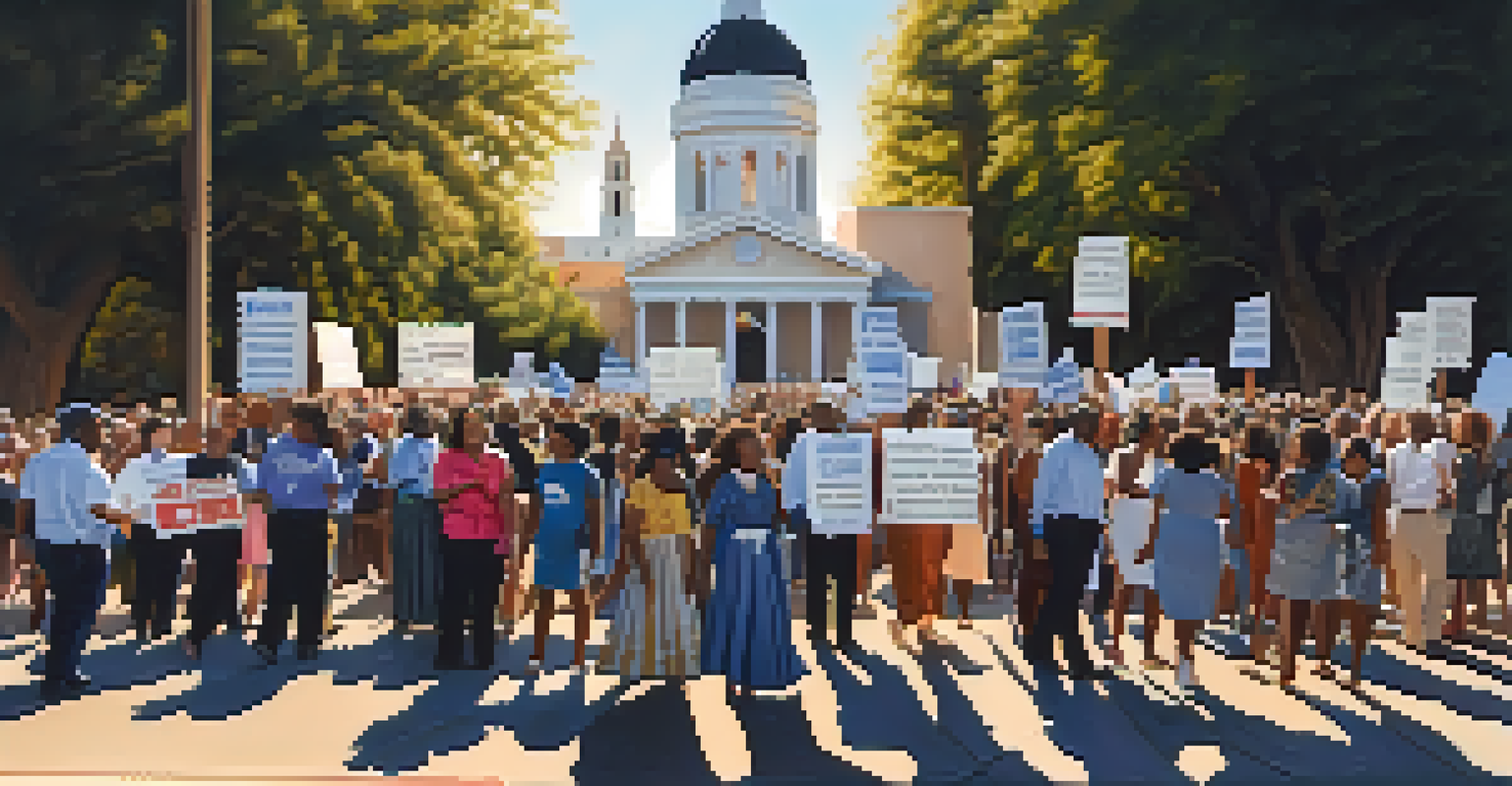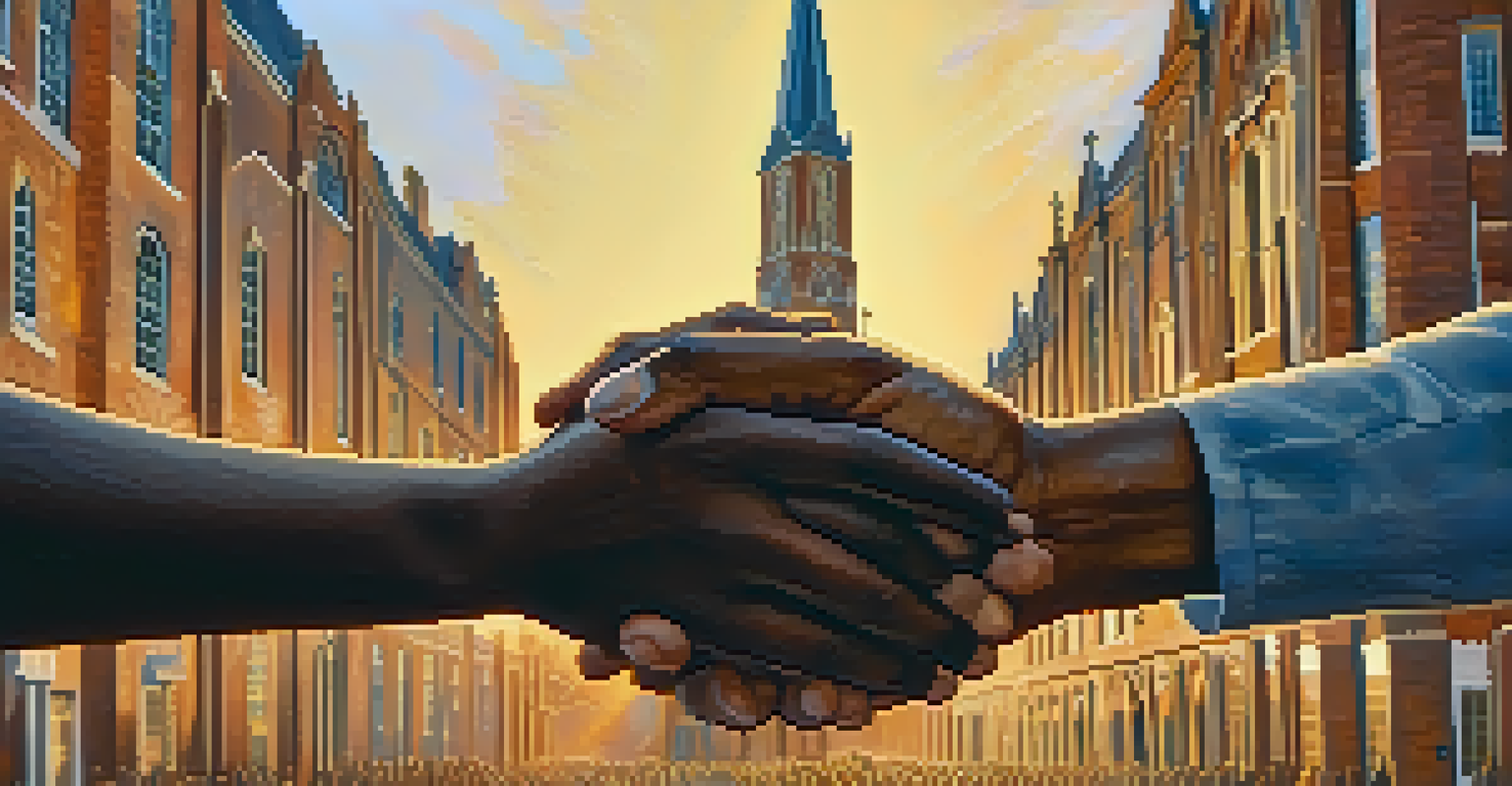Role of Sacramento Churches in the Civil Rights Movement

Historical Context of the Civil Rights Movement in Sacramento
The Civil Rights Movement, spanning from the 1950s to the 1960s, aimed to end racial discrimination and secure equal rights for African Americans. Sacramento, California, was not an island; it was deeply affected by the nationwide struggle for civil rights. Local churches became essential meeting places for community leaders and activists, fostering discussions around equality and justice.
Injustice anywhere is a threat to justice everywhere.
In this setting, churches provided a safe haven for organizing peaceful protests and rallies, drawing attention to the fight against segregation and discrimination. With their historical significance, many Sacramento churches, like the historic St. Paul Baptist Church, became beacons of hope and resilience. This context shaped how faith communities responded to the pressing social issues of their time.
Thus, the involvement of Sacramento churches was not merely about religious duties; it was about standing up for humanity and justice. Leaders from various denominations emerged, playing critical roles in mobilizing community support and amplifying the voices of those who felt marginalized. Their collective efforts laid the groundwork for significant change in the city and beyond.
Prominent Church Leaders and Their Activism
Many notable leaders emerged from Sacramento's churches during the Civil Rights Movement, each contributing to the cause in unique ways. Reverend Dr. E.E. Cleveland, a prominent figure in the local African American community, was known for his powerful sermons that inspired activism. He encouraged his congregation and the wider community to engage in the fight for civil rights, showing that faith could be a catalyst for social change.

Another influential figure was Reverend James A. McCoy of the Bethel African Methodist Episcopal Church, who organized voter registration drives and community outreach programs. These initiatives were crucial, as they aimed to empower African Americans in the electoral process, ensuring their voices were heard. By leveraging their platforms, these leaders galvanized support and provided essential resources for grassroots movements.
Churches Fostered Civil Rights Activism
Sacramento churches provided crucial spaces and support for community leaders to organize and advocate for civil rights.
The dedication and courage of these church leaders were instrumental in uniting different segments of the community. They emphasized the moral imperative of civil rights, reminding everyone that faith calls us to act against injustice. Their leadership not only shaped the movement in Sacramento but also inspired future generations to continue the fight for equality.
Churches as Safe Havens for Activism
Sacramento churches served as vital safe havens for activists during turbulent times. They offered meeting spaces for planning strategies and discussing civil rights issues without fear of reprisal. This atmosphere of safety allowed community members to gather, share ideas, and foster a sense of solidarity in their shared struggles for justice.
Faith is taking the first step even when you don't see the whole staircase.
Moreover, churches often provided resources such as food, shelter, and moral support for those involved in the movement. During protests and marches, church members would rally together, forming human shields to protect demonstrators from aggressive responses. This sense of community was crucial, as it highlighted the importance of collective action in the pursuit of civil rights.
In essence, churches were more than mere buildings; they became sanctuaries of hope and resilience. They embodied the spirit of activism, reminding individuals that they were not alone in their fight. By fostering unity and providing support, these religious institutions played a pivotal role in shaping the civil rights landscape in Sacramento.
Key Events Held in Sacramento Churches
Throughout the Civil Rights Movement, several significant events took place within the walls of Sacramento churches. One notable example was the mass meetings organized to discuss and strategize civil rights initiatives. These gatherings not only educated attendees about the pressing issues but also inspired collective action, leading to organized protests and demonstrations.
Another key event was the Freedom Sunday service at the St. Paul Baptist Church, which focused on voter registration. This service drew attention to the importance of civic engagement and encouraged congregants to participate in the electoral process. Events like these were crucial in mobilizing the community and fostering a sense of urgency around civil rights issues.
Prominent Leaders Shaped the Movement
Key figures like Reverend Dr. E.E. Cleveland and Reverend James A. McCoy inspired activism and empowered the African American community.
These church-led initiatives were not just about raising awareness; they were about taking tangible steps toward achieving equality. By using their spaces to host discussions, rallies, and educational events, Sacramento churches became central hubs in the civil rights movement. Their impact extended beyond the church walls, influencing the broader community and contributing to lasting change.
Community Outreach Programs Initiated by Churches
In addition to supporting the civil rights movement, Sacramento churches implemented various outreach programs to serve their communities. These initiatives addressed critical social issues such as poverty, education, and housing discrimination. By providing resources and support, churches played an essential role in uplifting marginalized communities and fostering resilience.
For example, many churches offered tutoring programs for children and adults, aiming to close the educational gap faced by African American students. Health screenings and wellness programs were also organized, ensuring that community members had access to vital healthcare services. These outreach efforts demonstrated that churches were committed to not just spiritual well-being but also to the holistic welfare of their communities.
Through these programs, churches not only addressed immediate needs but also built a foundation for long-term change. They cultivated a sense of belonging and empowerment, encouraging individuals to take charge of their futures. This multifaceted approach to activism underscored the integral role of churches in the broader civil rights movement.
Legacy of Sacramento Churches in Civil Rights History
The legacy of Sacramento churches in the Civil Rights Movement is profound, echoing through generations. Their contributions helped pave the way for significant legislative changes, including the Voting Rights Act of 1965. This act was a direct response to the injustices faced by African Americans, and the efforts of local churches played a crucial role in its passage.
Today, many churches in Sacramento continue to honor this legacy by engaging in social justice initiatives. They serve as reminders of the past while actively working towards a more equitable future. This ongoing commitment to activism reflects the enduring spirit of the civil rights movement, showing that the fight for justice is far from over.
Legacy of Ongoing Social Justice Efforts
The legacy of Sacramento churches in the Civil Rights Movement continues today with active engagement in social justice issues.
In recognizing this legacy, we celebrate the courage and resilience of those who stood up for what was right. The impact of Sacramento churches during the Civil Rights Movement remains a vital part of the city’s history, inspiring current and future generations to uphold the values of equality and justice.
Modern-Day Church Involvement in Social Justice
Today, Sacramento churches continue to play an active role in social justice advocacy, echoing their historical involvement in the Civil Rights Movement. Many congregations have embraced issues such as racial equality, immigration reform, and economic justice, illustrating that the fight for civil rights is ongoing. By engaging with contemporary issues, these churches reaffirm their commitment to serving their communities.
For instance, numerous churches have partnered with local organizations to address homelessness and food insecurity. They organize community events, provide resources, and advocate for policies that uplift the most vulnerable populations. This modern-day activism mirrors the spirit of the civil rights movement, showcasing how faith communities can unite for a common cause.

Moreover, the involvement of churches in social justice today highlights the importance of intersectionality. By addressing various systemic issues, these churches work to create a more inclusive society. Their continued engagement serves as a powerful reminder of the role that faith can play in fostering justice and equality.